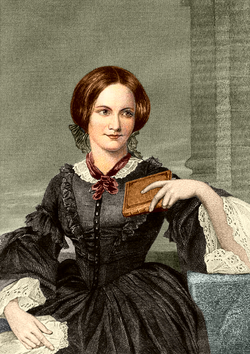An example of the telling of a story in the grammatical first person, i.e. from the perspective of "I", is Herman Melville's Moby-Dick , which begins with "Call me Ishmael." [15]
Reliability
First-person narration presents the narrative through the perspective of a particular character. The reader or audience sees the story through the narrator's views and knowledge only. [16] The narrator is an imperfect witness by definition, because they do not have a complete overview of events. Furthermore, they may be pursuing some hidden agenda (an "unreliable narrator").
Character weaknesses and faults, such as tardiness, cowardice, or vice, may leave the narrator unintentionally absent or unreliable for certain key events. Specific events may further be colored or obscured by a narrator's background since non-omniscient characters must by definition be laypersons and foreigners to some circles, and limitations such as poor eyesight and illiteracy may also leave important blanks. Another consideration is how much time has elapsed between when the character experienced the events of the story and when they decided to tell them. If only a few days have passed, the story could be related very differently than if the character was reflecting on events of the distant past. The character's motivation is also relevant. Are they just trying to clear up events for their own peace of mind? Make a confession about a wrong they did? Or tell a good adventure tale to their beer-guzzling friends? The reason why a story is told will also affect how it is written. [3] Why is this narrator telling the story in this way, why now, and are they to be trusted? Unstable or malevolent narrators can also lie to the reader. Unreliable narrators are not uncommon.
In the first-person-plural point of view, narrators tell the story using "we". That is, no individual speaker is identified; the narrator is a member of a group that acts as a unit. The first-person-plural point of view occurs rarely but can be used effectively, sometimes as a means to increase the concentration on the character or characters the story is about. Examples include:
Other examples include Twenty-Six Men and a Girl by Maxim Gorky, The Treatment of Bibi Haldar by Jhumpa Lahiri, During the Reign of the Queen of Persia by Joan Chase, Our Kind by Kate Walbert, I, Robot by Isaac Asimov, and We Didn't by Stuart Dybek. [18]
First-person narrators can also be multiple, as in Ryūnosuke Akutagawa's In a Grove (the source for the movie Rashomon ) and Faulkner's novel The Sound and the Fury . Each of these sources provides different accounts of the same event, from the point of view of various first-person narrators.
There can also be multiple co-principal characters as narrator, such as in Robert A. Heinlein's The Number of the Beast . The first chapter introduces four characters, including the initial narrator, who is named at the beginning of the chapter. The narrative continues in subsequent chapters with a different character explicitly identified as the narrator for that chapter. Other characters later introduced in the book also have their "own" chapters where they narrate the story for that chapter. The story proceeds in a linear fashion, and no event occurs more than once, i.e. no two narrators speak "live" about the same event.
The first-person narrator may be the principal character (e.g., Gulliver in Gulliver's Travels ), someone very close to them who is privy to their thoughts and actions (Dr. Watson in Sherlock Holmes stories) or one who closely observes the principal character (such as Nick Carraway in The Great Gatsby ). These can be distinguished as "first-person major" or "first-person minor" points of view.
Narrators can report others' narratives at one or more removes. These are called "frame narrators": examples are Mr. Lockwood, the narrator in Wuthering Heights by Emily Brontë; and the unnamed narrator in Heart of Darkness by Joseph Conrad. Skilled writers choose to skew narratives, in keeping with the narrator's character, to an arbitrary degree, from ever so slight to extreme. For example, the aforementioned Mr. Lockwood is quite naive, of which fact he appears unaware, simultaneously rather pompous, and recounting a combination of stories, experiences, and servants' gossip. As such, his character is an unintentionally very unreliable narrator and serves mainly to mystify, confuse, and ultimately leave the events of Wuthering Heights open to a great range of interpretations.
A rare form of the first person is the first-person omniscient, in which the narrator is a character in the story, but also knows the thoughts and feelings of all the other characters. It can seem like third-person omniscient at times. A reasonable explanation fitting the mechanics of the story's world is generally provided or implied unless its glaring absence is a major plot point. Three notable examples are The Book Thief by Markus Zusak, where the narrator is Death, From the Mixed-Up Files of Mrs. Basil E. Frankweiler , where the narrator is the titular character but is describing the story of the main characters, and The Lovely Bones by Alice Sebold, where a young girl, having been killed, observes, from some post-mortem, extracorporeal viewpoint, her family's struggle to cope with her disappearance. Typically, however, the narrator restricts the events relayed in the narrative to those that could reasonably be known.
